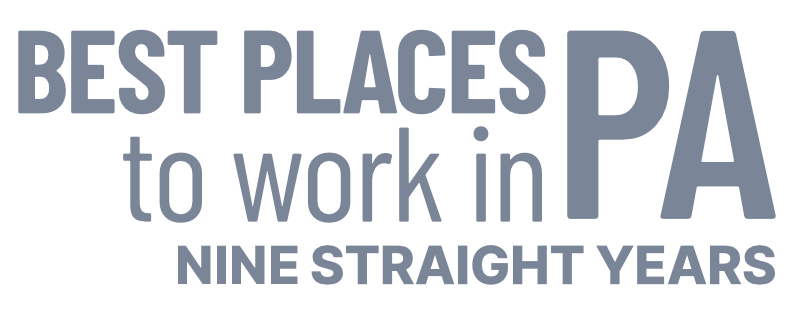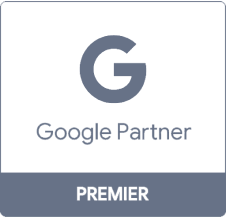What Is On-Page SEO? How to Do On-Page Optimization in 2024
If you have a website for your business, you likely know and understand the basics of SEO. But do you understand on-page SEO and how to use on-site optimizations to grow your visibility in search engines?
On this page, we’ll explain SEO — specifically on-page SEO.
Here’s a quick overview of everything we’ll cover:
- What is on-page SEO?
- On-page SEO vs. off-page SEO: What’s the difference?
- What are the benefits of on-page SEO?
- 12 on-page SEO ranking factors to optimize
- How to optimize for on-page SEO
- How to evaluate your on-page optimization
- How to check a competitor’s on-page SEO
Want to analyze your website’s on-page SEO? Run it through our SEO Checker to get your free report! You can also contact us online or call us at 888-601-5359 to speak with a specialist about on-page SEO services!
Looking for an all-in-one SEO audit tool? You've found it.
SEO Checker provides data on key metrics to give you:
- Complete SEO score
- Content Grade
- Site Speed Analysis
- and more.

What is on-page SEO?
On-page SEO definition
On-page SEO is the practice of optimizing elements on your web pages, such as content and page speed, to improve your ranking and visibility in search engine results pages (SERPs).
On-site SEO involves optimizing and creating content for user intent. You’d also want to optimize your pages’ URLs, internal links, page speed, and title tags, among others.
On-page SEO vs. off-page SEO: What’s the difference?
On-page SEO differs from off-page SEO, another term you’ll likely encounter when trying to boost your online rankings.

On-page SEO vs. off-page SEO
On-page SEO refers to optimizations on your website, while off-page SEO refers to optimization actions outside your website.
Examples of on-site SEO efforts are creating and optimizing content according to search intent and streamlining your site navigation. Meanwhile, off-page SEO efforts include earning backlinks from other reputable websites.
Successful SEO requires a healthy combination of on-page and off-page SEO. If you want to learn more about how to use off-page SEO, head over to our off-page SEO guide!
What are the benefits of on-page SEO?
On-page SEO is important for your overall strategy and leads to:
- Higher search rankings
- Increased traffic to your website
- More conversions
Because your content addresses your target audience’s search intent, they’ll view your business and website as a relevant resource for their needs. The helpful content on your website will also provide signals to search engines that your website is a relevant resource for your niche.
The results of on-page SEO take time, but once your on-page SEO strategy gets off the ground, it can make your online rankings and sales soar.
12 on-page SEO ranking factors to optimize
There are several on-page ranking factors. Take the time to optimize each one of these to improve your rankings and outrank your competitors:
- URL
- Title tag
- Meta description
- Heading tags
- Alt tags
- Keywords
- Content
- Images
- Internal linking
- Schema markup
- Page speed
- Mobile-friendliness
Keep reading to learn how to do on-page optimization for each of these on-page SEO factors!
How to optimize for on-page SEO
Now that you know what factors influence your on-page SEO, you can start optimizing them. Remember, it will take time to do on-site SEO and see the results from it.
SEO is also not a one-and-done activity. Following best practices for these factors, however, will help you create a website that can endure algorithm updates.
12 on-page SEO techniques
- Use a descriptive and optimized URL
- Include your target keyword in your title tag
- Use your meta description to encourage searchers to click your page
- Improve your content’s readability with heading tags
- Use an alt tag for your multimedia content
- Use your keywords strategically
- Publish helpful content
- Optimize your images
- Mind your site speed
- Add internal links
- Add schema markup
- Make your website mobile-friendly
1. Use a descriptive and optimized URL
On-page SEO basics: URL
- Clean, organized URLs improve your website’s architecture.
- Use your target keyword in your URLs.
Google recommends that you use URLs that immediately tell site visitors what a page is about. That’s because parts of the URL may appear in the SERPs, informing searchers which pages can be useful for them.
That said, it’s an on-page SEO basic practice to include your target keyword in your URLs.
For example, if you have a page about dog daycares in Daytona Beach, a good URL for that would be www.yoursite.com/dog-daycares-in-daytona. Or, if you have multiple locations, you may use the following format: www.yoursite.com/locations/daytona/dog-daycare.

Including your keyword in your URL instead of a long string of jumbled numbers also makes your site easier to navigate and gives people a better idea of your page topics.
Which of the following URLs would you rather visit, for example?
- https://www.example.com/category/subcategory/keyword.html
- https://www.example.com/125typu4f5ww56fifl6639j875fe.html
Use clean, organized URLs — like the first example above — to improve your site’s architecture and help you rank higher in relevant search results.
2. Include your target keyword in your title tag
On-page SEO basics: title tag
- Limit your title tag to 50 to 60 characters to prevent Google from cutting it off in SERPs.
- Front-load your target keyword in your title tag.
In order to show your website in search engine results pages (SERPs), Google has to know what your page is about. Using specific keywords in the title tag of each page (<title>, </title>) makes it easier for search engine crawlers to understand your website.
For example, if you’re targeting the keyword, “dog daycare daytona beach,” you may create the following title tag: “Top Dog Daycare in Daytona Beach | Company Name.”

For the best results, limit your title tag to 50 to 60 characters to prevent Google from cutting it off in search results and use your targeted keyword at the beginning.
Make sure you use a unique title tag for every page to inform search engines and users what each page is about.
BONUS READING: HOW TO WRITE A TANTALIZING TITLE TAG
3. Use your meta description to encourage searchers to click your page
On-page SEO basics: meta description
- Include your core and related keywords in your meta description.
- Keep your meta description within 160 characters.
A meta description doesn’t influence your on-page optimization directly. It’s a feature that helps users, however, learn more about your page.
Google will bold user search terms that appear in your meta description. Hence, it’s a good idea to optimize your meta description for on-page SEO. Include your core and related keywords in your meta description for the best results.

Your page about dog daycare in Daytona Beach, for instance, may use the following meta description: “Looking for dog daycare in Daytona Beach? Come to Rover’s for dog daycare, dog grooming, and more!”
For the best results, keep your meta description within 160 characters.
4. Improve your content’s readability with heading tags
On-page SEO basics: heading tags
- Use your target keyword in your H1 tag.
- Break your content with headings to make it readable and skimmable for users.
- Run your page through our free Readability Test.
Heading tags are useful for both users and search engines. Use heading tags throughout your content to break it up and make it more readable and skimmable for users.
For example, a post about dog daycare may use the following headings:
- What does dog daycare include?
- How much does dog daycare cost?
- How to find the best dog daycare
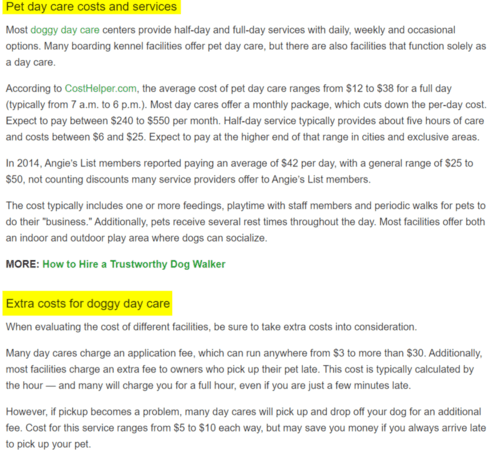
When writing your heading tags, remember to target your core keyword in your H1 tag. Want to check your page’s readability? Run your page through our free Readability Test.
5. Use an alt tag for your multimedia content
On-page SEO basics: Alt tags
- Alt tags are helpful for both users and search engines.
- Alt tags make your content accessible to users on your site.
Search engines can’t see multimedia like images, so they depend on alt attributes to tell them what multimedia is.
For example, if you have a photo of an apple, your alt tag could say “red delicious apple.” Beyond that, you can add descriptive names to the image files themselves so Google can get a better idea of your multimedia.

Always include an alt tag for your multimedia content. Besides Google, your alt tags also help users who can’t see or interact with your content. Using alt tags makes your content accessible to everyone browsing your site.
6. Use your keywords strategically
On-page SEO basics: keywords
- Use keyword research tools to help you understand the search terms people use to look for your offerings.
- Optimize your pages for relevant keywords to help Google read them and make them easy for users to skim.
Each page on your site should include text content that discusses the page’s topic.
Even pages that are typically not optimized, such as the “Contact Us” page, can help your business gain recognition online. Using keywords throughout the body text of your page helps Google read it and rank it appropriately.
You should research and compile keywords for each page on your site. Keyword research tools like KeywordsFX and Keywordtool.io can help you understand the keywords people research related to your products and services.
Look at helpful metrics, like monthly search volume and competition, to determine which keywords offer you the most value.
In most cases, smaller companies will focus on long-tail keywords or keywords with three to four words.
Long-tail keywords often have lower monthly search volumes, but they also have lower competition. It’s typically easier to decipher the search intent behind long-tail keywords since they are more specific.

For example, if someone searches the short-tail term, “dog treats,” it’s hard to identify exactly what they want to find. Maybe they’re researching the best dog treats for small dogs, or they might want to try a dog treat recipe.
On the other hand, if someone searches the long-tail phrase, “buy dog treats for puppies,” you know exactly what they want to find — and that they’re ready to purchase.
High-performing SEO campaigns contain both short and long-tail keywords — and the terms you choose to target will depend on your business and goals.
7. Publish helpful content
On-page SEO basics: content
- Write content that showcases your business’s E-E-A-T.
- Regularly audit and update your content to ensure it contains updated information.
- Find and remove duplicate content.
Content is critical to on-page optimization. With content, you give users a reason to visit your site.
Whether it’s to read a blog post or check out a product page, people browse your content. Optimizing your content can help search engines understand and rank your content, which can lead to people finding your website.
On-page SEO for content revolves around the following practices:
- Writing helpful content that showcases E-E-A-T (experience, expertise, authoritativeness, and trustworthiness).
- Using your keywords in headings and paragraphs
- Breaking your content into skimmable headings
- Complementing your content with helpful images
- Ensuring your content uses correct spelling and grammar
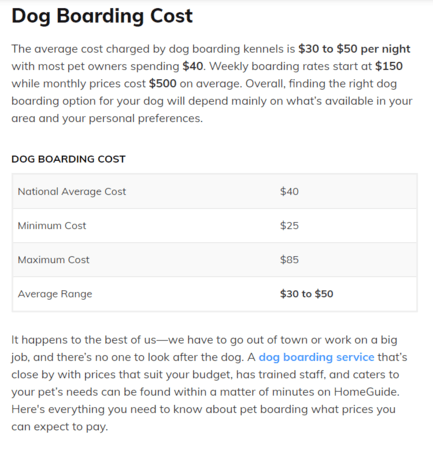
In addition, you should regularly add new pages of content to your site so that search engines will see that you’re hard at work for your customers. Regularly audit and update your website content to ensure that it contains updated information.
Finding and removing duplicate content also improves your on-page SEO. Duplicate content refers to blocks of similar content on multiple pages on your website — and it’s undesirable for two reasons:
- Google doesn’t know which page to rank: When numerous site pages contain the exact same information, search engines won’t know which page to rank in search results.
- Duplicate content confuses site visitors: When visitors encounter duplicate content on your site, it can confuse them, and they may not know what step to take next. Duplicate content throws a wrench in your content funnel and prevents your audience from taking action.
Duplicate content is bad for on-page SEO, so make sure to regularly check your site for duplicate content and remove it.
8. Optimize your images
On-page SEO basics: images
- Use high-quality and compressed images for your website.
- Add alt text to make your images accessible.
High-quality images are essential to your users and SEO. They help site visitors better understand your content.
With images, you can break up your content. They also provide context for complicated processes or difficult-to-describe features.

Here are some image SEO best practices:
- Compress your images so they don’t slow down your page speed.
- Add alt text to make your images accessible and to rank in Google Images.
- Include usability features such as transcriptions for videos.
Transcriptions and alt text are another great place to include your target keywords, and incorporating them can help make your site ADA-compliant.
9. Mind your site speed
On-page SEO basics: page speed
- Page speed is still a ranking factor.
- Use PageSpeed Insights to check your page load time.
Do you have the patience to wait for a web page to load for two minutes? Like you, most online users will bounce off a page that doesn’t load quickly.
Search engines like Google use page speed as a ranking factor, so it’s important to optimize your page speed to improve the user’s on-site experience.

You can use PageSpeed Insights to check your page load time. PageSpeed Insights will provide you with customized recommendations for speeding up your site. You can also follow some best practices for page speed, like compressing images, eliminating unnecessary website code, and more.
10. Add internal links
On-page SEO basics: internal linking
- Internal linking helps your site visitors access other valuable content on your site.
- Add relevant links to and from new pages.
- Use tools like Screaming Frog to check the status of your site’s internal links.
Internal linking often gets overlooked when it comes to on-page SEO. As your site grows, however, it’s critical to develop an internal linking process. That’s because internal linking helps crawlers explore your site, discover new content, and understand the context of different pages.
Having little to no internal linking on your pages negatively impacts the user’s ability to access content on your site that is valuable to them. And if they can’t access it, that directly affects your conversion rate.

Use internal links to improve your on-page SEO by:
- Adding links to relevant, existing content in new posts
- Adding links from relevant, existing content to new pages
Every internal linking strategy is different, but for the best results, you should make sure that every new page has at least two to three links to it. If you’re struggling to find pages, don’t force a link. Instead, consider creating pillar content.
You can check the status of your internal linking with a free tool like Screaming Frog.
11. Add schema markup
On-page SEO basics: schema markup
- Adding schema markup or structured data helps search engines understand your content better.
- Google uses schema markup to display pages as a rich result in SERPs.
If you want your page to display prominently in the SERPs, use schema markup. Schema markup, or structured data, is code that helps search engines better understand and categorize web pages.
Google uses it to show rich results, which are a type of search results showing other details about the page, making them more engaging. These results attract more clicks and can improve your click-through rates in SERPs.
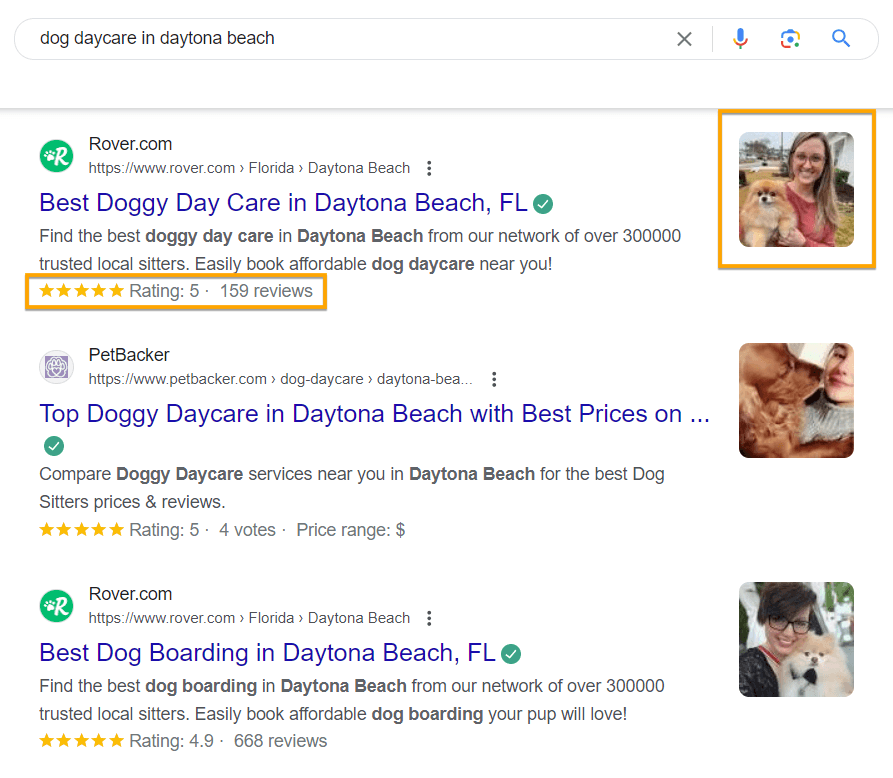
There are several types of schema markup. One of the most common ones is a product markup, which provides details about an offering’s price and review ratings.
Other common types are:
- Recipes
- Local business
- Breadcrumb
- Carousel
Implementing schema markup may also help you optimize your content for Google’s Search Generative Experience (SGE).
12. Make your website mobile-friendly
On-page SEO basics: mobile friendliness
- Google uses mobile-first indexing, so it’s important for your site to be mobile-friendly to rank.
- Use tools like Google Lighthouse to check your website’s mobile friendliness.
Optimizing your site for mobile is essential because more than 50% of the Internet’s traffic comes from mobile devices. Google even uses a mobile-first approach for indexing websites.
Mobile compatibility isn’t a suggestion anymore. It’s a requirement, especially if you want to rank well for your keywords.

On-page optimization for mobile friendliness often focuses on developing a responsive site. With a responsive website, you have a single site, which makes it easy to update it and add new content.
Use tools like Google Lighthouse to check your site’s mobile friendliness.
How to evaluate your on-page optimization
Now that you know about on-page SEO, you can evaluate your site’s performance. You can either use a tool to audit your site or you can look at separate pages manually, depending on your preference. If you choose to look manually, you can use these criteria as a basis for on-page optimization.
- Are you using keywords for every page? Have these keywords been delivering visitors? If they haven’t been, why are you still using the keywords?
- Are you linking pages on your site to each other? Could this be a way to help visitors get from one point to another with only a click or two?
- Does your site load quickly? Or do some pages take a long time to load? If you’re having problems, find out where the issue lies. A slow-loading website is something neither human nor bot visitors enjoy!
- Does your site have fresh content? Has it been more than one or two years? Has anything changed or is it all still relevant?
How to check a competitor’s on-page SEO
You probably don’t have to think too terribly hard to come up with your strongest competitors. Unfortunately, they’re also working hard to establish themselves in your industry, and you can be sure they’re utilizing on-page SEO just like you.
If you want to find out what you could be doing better, check out their websites and take a look at what they’re doing. While they probably have a few secrets up their sleeves, you can get tons of information by just checking out a few pages.
Checking out your competition can also show you areas to improve on your own website, strengthening your business as a whole. Begin to more fully develop your on-page SEO, and you’ll be likely to see your own site’s page rankings start to climb over the coming weeks and months.
Independent research from Clutch has named WebFX the
top SEO company in the United States.
Clutch has personally interviewed more than 250 WebFX clients to discuss their experience partnering with us.
Read More Clutch Reviews

Get professional on-page SEO help
SEO takes time and is an ongoing process. If you and your team need help to improve your on-page SEO, you can turn to WebFX.
We’re a full-service digital marketing agency with 25+ years of experience. Our award-winning team of SEO professionals is pumped to learn about your business, industry, and goals to deliver the results you need and grow your bottom line.
Contact us today or call us at 888-601-5359 to learn more about our on-page SEO services!
Table of Contents
- What is On-page SEO?
- On-page SEO vs. Off-page SEO: What’s the Difference?
- What Are the Benefits of On-page SEO?
- 12 On-page SEO Ranking Factors to Optimize
- How to Optimize for On-page SEO
- 1. Use a Descriptive and Optimized URL
- 2. Include Your Target Keyword in Your Title Tag
- 3. Use Your Meta Description to Encourage Searchers to Click Your Page
- 4. Improve Your Content’s Readability with Heading Tags
- 5. Use an Alt Tag for Your Multimedia Content
- 6. Use Your Keywords Strategically
- 7. Publish Helpful Content
- 8. Optimize Your Images
- 9. Mind Your Site Speed
- 10. Add Internal Links
- 11. Add Schema Markup
- 12. Make Your Website Mobile-friendly
- How to Evaluate Your On-page Optimization
- How to Check a Competitor’s On-page SEO
- Get Professional On-page SEO Help
Related Resources
- What is My SEO Score? (Plus 9 Factors That Affect It)
- What is Natural Language Processing (NLP)?
- What is Negative SEO?
- What is Off-Page SEO?
- What is Organic Marketing? (And 5 Effective Tips for Using Organic Marketing)
- What is Organic Search Marketing? [+3 Tips for Success]
- What is Organic SEO?
- What is Position Zero (P0): Your Guide to SEO Gold
- What is Schema Markup and How Do I Implement It for SEO?
- What is Technical SEO? (And 10 Tips for Optimizing Your Site)
Marketing Tips for Niche Industries
- Tourism/hospitality Statistics
- Treat More Patients with Healthcare Marketing Services
- Urgent Care Marketing Ideas: 5 High-ROI Tactics
- WebFX: Your Education Digital Marketing Agency
- Why Auto Part Retailers Need Digital Marketing
- Why Digital Marketing is Essential for Auctioneers
- Your Guide to Digital Marketing for Exercise Equipment Companies
- Vision Care Industry Statistics
- 10 Best Orthodontist Marketing Ideas to Earn More Patients
- 10 Digital Marketing Strategies for the Heavy Equipment Industry


How Is Your Website's SEO?
Use our free tool to get your score calculated in under 60 seconds.

